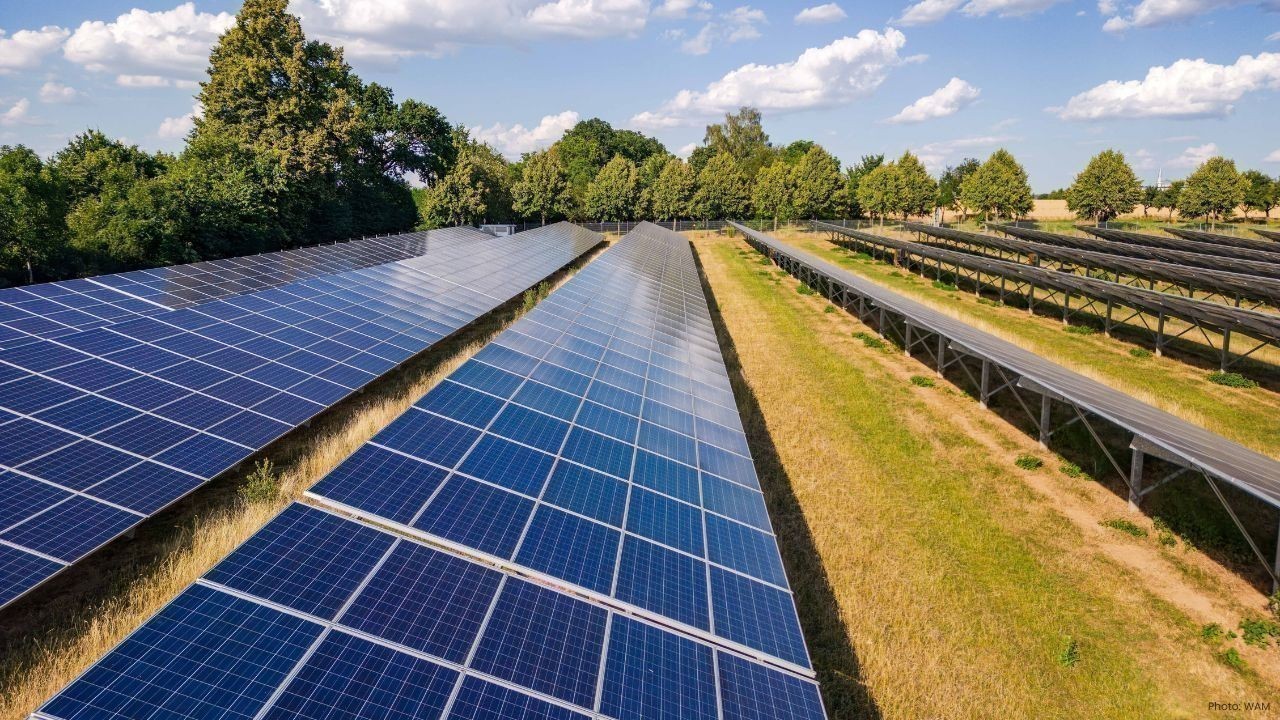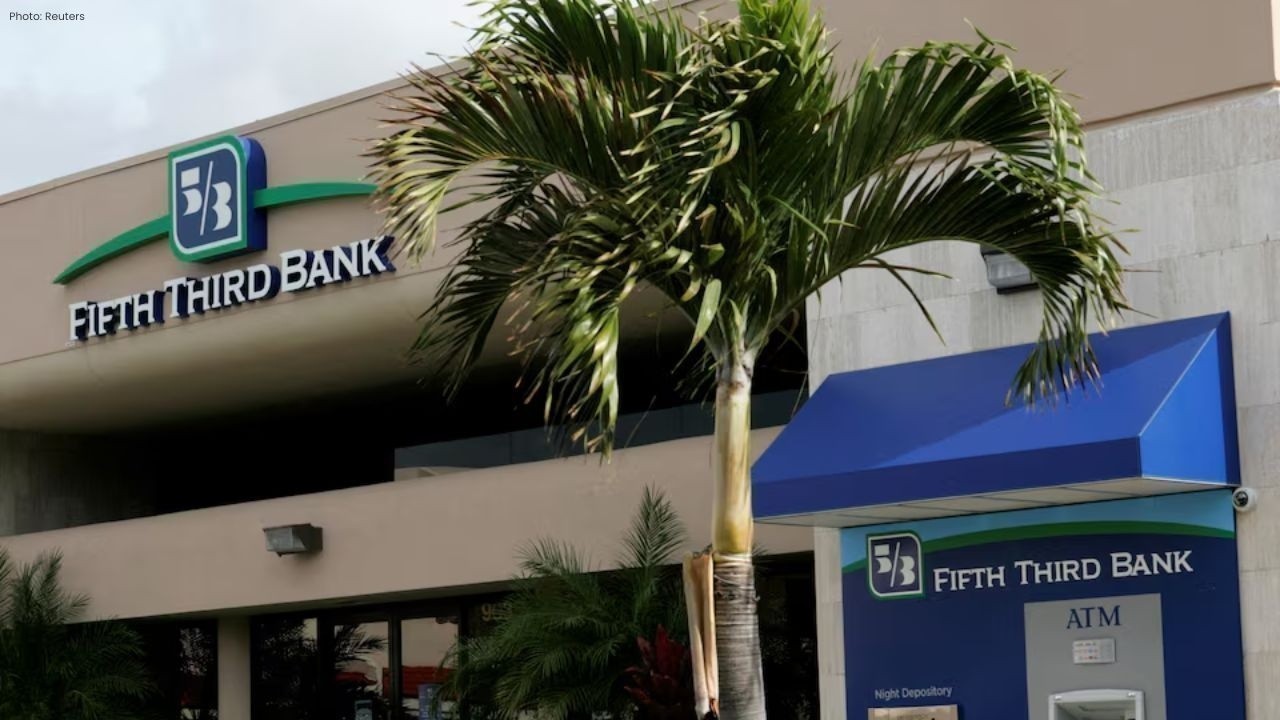
Post by : Mina Saadi
Renewable energy sources continued to play a leading role in Germany’s electricity consumption this year, covering nearly 57 percent of demand in the first three quarters of 2025. The share matched last year’s level, according to new industry data released on Tuesday.
The figures came from preliminary calculations by the Centre for Solar Energy and Hydrogen Research Baden-Württemberg (ZSW) and the German Association of Energy and Water Industries (BDEW). The findings highlighted that while solar power recorded a major surge, onshore wind farms produced less due to weaker wind conditions earlier in the year.
Solar Power on the Rise, Wind Output Falls
The data showed that solar power generation grew by almost 25 percent year-on-year, reflecting both the expansion of solar installations and favorable sunshine hours during spring and summer. The strong performance of solar energy compensated in part for weaker results from wind farms.
Onshore wind output dropped by 12 percent compared to last year. Analysts explained that Germany experienced a weaker wind season in the first quarter of 2025, which reduced generation capacity during a key period of the year. Offshore wind production held relatively stable, but the decline in land-based turbines highlighted how weather patterns directly affect renewable supply.
Overall, Electricity Production Increases
Despite fluctuations between renewable sources, Germany’s gross electricity production rose by 0.9 percent compared with the same period in 2024. The growth was modest but underlined the stability of the country’s power market even as it undergoes major changes in its energy mix.
Fossil fuels continued to contribute a significant share. Lignite and hard coal together accounted for just over 20 percent of electricity generation. Gas-fired power plants made up around 16 percent. These sources remain crucial for ensuring supply security, especially during periods when renewable output is low.
Government Adjusts Energy Transition Plans
Germany’s Economy and Energy Minister, Katherina Reiche, addressed the results and outlined the government’s next steps. She said Berlin aims to fine-tune its energy transition strategy, known as the Energiewende, in light of slower-than-expected growth in electricity demand.
“We are carefully reviewing projections for power consumption in the coming years. The figures suggest demand growth will be more gradual than previously estimated,” Reiche explained. She added that this adjustment could influence the pace at which renewable energy capacity and the national power grid are expanded.
One of the government’s considerations is cost reduction. Reiche confirmed that policymakers are weighing the option of ending subsidies for small rooftop solar systems. While rooftop solar has been popular among households and small businesses, the subsidies have been criticized for adding financial pressure to electricity consumers through surcharges.
Long-Term Targets Remain in Place
Despite these possible changes, the German government reaffirmed its climate and renewable goals. Minister Reiche stressed that the federal target of lifting renewable energy’s share of electricity consumption to 80 percent by 2030 remains unchanged.
“Our commitment to a sustainable, climate-friendly energy supply is firm. We will continue to expand renewable capacity, improve energy efficiency, and modernize the grid,” she said.
The announcement reassured environmental groups and industry players who had raised concerns that subsidy cuts might signal a retreat from Germany’s climate ambitions. Reiche clarified that any adjustments will focus on balancing affordability with sustainability.
Industry Reactions and Market Implications
Energy experts noted that the steady 57 percent renewable share shows both progress and challenges. The surge in solar energy demonstrated the sector’s resilience, while the fall in wind output exposed the vulnerability of weather-dependent sources.
Stay informed with the latest news. Follow DXB News Network on WhatsApp Channel
“The data reflect the importance of a diverse renewable mix,” said an analyst from ZSW. “Germany needs solar, wind, hydro, and biomass working together to ensure stability, especially as coal and gas are phased out.”
Market observers also highlighted that coal’s share, though reduced over the past decade, still accounts for one-fifth of the energy mix. Gas use, at 16 percent, remains sensitive to international prices and supply chains. Germany has been diversifying its gas imports since the energy crisis triggered by global market disruptions in recent years.
Balancing Energy Costs and Investments
One of the biggest challenges for Germany is ensuring that its clean energy shift does not place excessive financial strain on households and industries. The debate over rooftop solar subsidies reflects this concern.
Supporters argue that subsidies help citizens participate in the energy transition and reduce reliance on large utility companies. Critics counter that the costs of these incentives are unevenly distributed and often burden low-income households through higher electricity bills.
The government’s potential move to scrap or reduce subsidies signals an effort to find a middle ground. Officials are also exploring other mechanisms, such as targeted support for large-scale solar and wind projects, which can deliver cheaper electricity per unit generated.
Broader Context: Germany’s Climate Goals
Germany has been a global leader in renewable energy development since the early 2000s. The Energiewende policy aimed to phase out nuclear power, reduce reliance on coal, and expand renewables. Nuclear plants were fully shut down in 2023, making renewable expansion and grid stability even more critical.
The country’s climate law requires a reduction of greenhouse gas emissions by at least 65 percent by 2030 compared with 1990 levels. Achieving this target depends heavily on accelerating renewable energy growth and cutting fossil fuel use.
The European Union has also set binding goals for member states under the Green Deal, further pushing Germany to stay on track. Failure to meet these targets could lead to financial penalties and weaken the country’s leadership in climate diplomacy.
The latest figures confirm that renewable energy remains the backbone of Germany’s electricity system, but they also highlight the complexity of balancing technology, weather, and economic costs. Policymakers face the task of fine-tuning strategies without undermining public trust or climate commitments.
Industry experts expect continued investment in grid expansion, energy storage, and offshore wind development. These areas are seen as critical for stabilizing supply and managing fluctuations between solar-rich summers and wind-heavy winters.
Germany’s energy transition is often viewed as a test case for other advanced economies seeking to balance sustainability, affordability, and reliability. The decisions made in Berlin over subsidies, grid planning, and renewable expansion will likely influence energy debates across Europe and beyond.
As of the latest data, renewable energy sources supplied 57 percent of Germany’s electricity between January and September 2025, unchanged from last year. Solar power surged, wind output fell, and overall production grew slightly. The government is now reviewing its strategy, considering subsidy reforms, but maintains its 2030 goal of reaching 80 percent renewable electricity.

Hedge Funds Shake U.S. Banks Amid Rising M&A Surge
Florida hedge funds push regional banks toward sales, fueling a wave of mergers and acquisitions as

Toyin Akanni — The Scientist Who Found Her Way Back to Storytelling
Toyin Akanni — scientist turned storyteller inspiring young minds in the UAE through books, creativi

MÄNN Skincare Launches UAE’s Advanced Men’s Grooming Range
MÄNN Skincare launches in UAE, offering science-backed, natural formulas designed specifically for m

Kerry Unboxed Showcases Food Innovation at Gulfood 2025
Kerry Unboxed brings live culinary experiences, trend-driven concepts, and interactive sessions to i

FOYETT Launches Dubai Collection: Wearable Art in Motion
FOYETT redefines ready-to-wear with artistic, made-to-order pieces in Dubai, blending creativity, el

Trump Dances To YMCA With Marines Aboard US Ship In Japan
US President Donald Trump dances to YMCA with Marines aboard USS George Washington in Japan, winning

Dr. Todd McAllister Leads Global Shift in Preventive Healthcare
Dr. Todd McAllister’s Skai Health brings concierge, preventive medicine to London and GCC, reshaping

Mitchell Marsh Backs Aggressive Plan Ahead of India T20 Series
Australia captain Mitchell Marsh says his team will continue playing fearless cricket as they prepar

Smriti Mandhana Becomes World’s No.1 ODI Batter
India’s Smriti Mandhana rises to No.1 in ICC Women’s ODI rankings with a career-best rating of 828 a

Suryakumar Yadav Focuses on Team Spirit and Fielding Goals
India captain Suryakumar Yadav stresses teamwork, energy, and stronger fielding efforts ahead of the

Sherwood Leads Canucks to Overtime Win Against Oilers
Kiefer Sherwood scored twice, including an overtime winner, as Vancouver Canucks defeated Edmonton O

Freeman Leads Dodgers to 6-5 Thriller Over Blue Jays
Freddie Freeman’s 18th-inning walk-off homer gives the Dodgers a thrilling 6-5 win over the Blue Jay

Bayern Target Another Victory in German Cup Match
Bayern Munich look to continue their perfect start to the season with a German Cup clash against Col

Lionel Messi Aims for 2026 World Cup with Argentina
Lionel Messi hopes to play in the 2026 FIFA World Cup but says his final decision will depend on fit

Suryakumar Shares Update on Shreyas Iyer’s Health Recovery
India’s T20I captain Suryakumar Yadav confirmed Shreyas Iyer is stable and recovering after a spleen